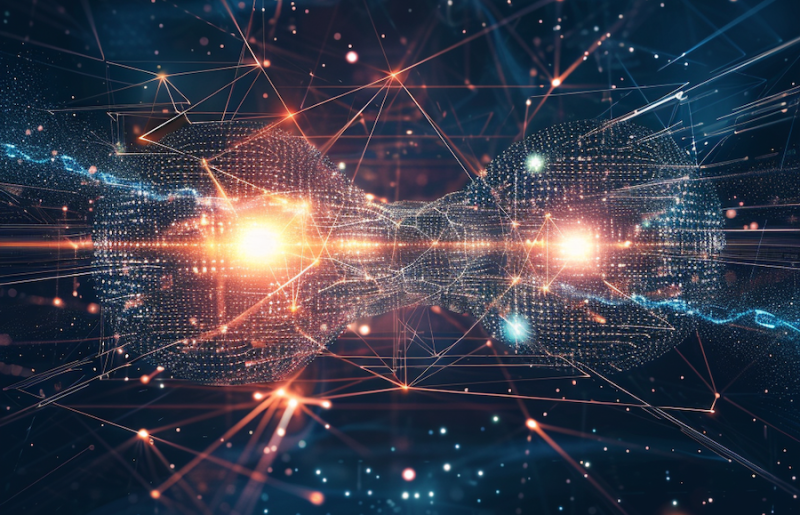
Revolutionizing AI Chatbots: Ragu AI’s Double RAG System for Reliable and Accurate Interactions
The Double RAG system by Ragu.AI uses two Retrieval Augmented Generation systems to enhance chatbot accuracy and reliability.
In the rapidly evolving world of artificial intelligence, we’re witnessing an era of remarkable innovation and diversity.

In the rapidly evolving world of artificial intelligence, we’re witnessing an era of remarkable innovation and diversity. AI, once a field dominated by rigid algorithms and predictable outcomes, now teems with a variety of approaches, each offering unique strengths and challenges. At the heart of this transformation are two groundbreaking types of AI systems: Large Language Models (LLMs) like ChatGPT and Retrieval-Augmented Generation (RAG) systems.
Often, attempts to compare these two are like trying to compare apples to oranges – or, to stretch the imagination further, apples to spaceships. On one hand, LLMs like ChatGPT, the ‘apples’ of AI, are grounded in extensive datasets, learning through interactions within a vast array of pre-existing information. They represent the classic approach to machine learning: robust, reliable, and rooted in established data patterns.
On the other hand, RAG systems – the ‘spaceships’ of our analogy – propel AI into uncharted territories. These systems not only leverage existing knowledge but dynamically incorporate new, external data during the generation process. This makes RAG akin to a spaceship that’s constantly charting new courses based on real-time cosmic data, representing a more adaptive and evolving approach.

However, upon deeper reflection, perhaps a more fitting analogy is that RAG systems are like apples on spaceships: combining the reliable, foundational aspects of LLMs (the apple) with the dynamic, explorative capabilities of cutting-edge AI technology (the spaceship). This unique blend positions RAG systems at the forefront of AI’s future, embodying both the stability of traditional models and the adaptability required for modern challenges.
In this blog, we’ll delve into the distinct functionalities and applications of LLMs and RAG
When we delve into the world of AI, it’s captivating to see how innovation presents different opportunities for people to create, communicate and learn. ChatGPT and similar models, representing the ‘apples’ in our analogy, fall under a grouping of AI technology known as Large Language Models (LLMs).

Essentially, LLMs are a type of artificial intelligence model that relies on processing and understanding human languages at a large scale. They are a product of machine learning, trained on immense volumes of data – mostly snippets of conversations, books, websites, and other forms of written communication. The core functionality of LLMs involves deciphering input data, understanding context, generating responses, and helping initiate meaningful interactions in a variety of applications, including chatbots, content generation, and language translation.
Imagine learning a new language; it’s all about exposure and immersion, understanding the linguistic patterns, adapting to its syntax, and finally, applying what you’ve learned. LLMs operate pretty much on the same principles. However, these systems learn from a massive scale of data, typically a diverse corpus of internet text, that introduces them to various aspects of languages, thought processes, and more.
Models like ChatGPT thrive through a supervised learning process, which starts with ‘human-in-the-loop’ training. Initially, these models learn from a dataset curated by humans, which includes correct responses to a broad array of prompts. Over time, with exposure to multiple cycles of different inputs and outputs, these systems learn to generate responses that mirror the structure, style, and content of the training data.
However, it’s worth noting that while LLMs are trained on extensive datasets, the lack of on-the-fly learning makes them comparatively static. They’re like a ship adhering to predefined navigation paths – responding based on the knowledge they’ve accumulated during the training phase, and not via real-time data acquisition or the latest information input. In our next section, we’ll shed light on (RAG) models, the spaceships of AI – exploring their defining characteristics, learning approach, and their potential to revolutionize AI technology. Understanding how each contributes to the broader AI landscape and what their differing approaches mean for the future of technology.

As we shift gears to the RAG systems, the spaceships of AI, a new dimension of artificial intelligence begins to take shape. Unlike their traditional counterparts, which are akin to automated ships strictly adhering to preprogrammed navigation paths, the RAG systems break free from the familiar shores of predefined responses.
At the epicenter of a RAG system is the concept of Retrieval-Augmented Generation itself. Unlike Generation models that craft responses based on pre-existing patterns in their training data, Retrieval models search an indexed data set to find the most helpful responses. This modus operandi of a RAG system draws on the strengths of both worlds. The integration of retrieval into the generative process enables RAG models to source relevant document snippets from vast datasets and factor in this freshly retrieved data while generating responses.
The dynamic learning approach essentially set RAG models apart from traditional AI systems. As we have mentioned, traditional models function as repositories of data, absorbed during the training phase, with minimal regard for real-time information. However, the RAG systems, with their in-built data-harvesting capability, are aligned with the rapidly evolving digital landscape, consuming and integrating new information on-the-go.
This fluency in managing real-time data manifests impressively in a RAG system’s behavior during conversation. Posing a question to a RAG model results in an active retrieval process where the model scans its indexed dataset for related information. Like a surgeon choosing the right tool during an operation, the RAG model intelligently cherry-picks snippets that could aid in crafting an appropriate response, thereby consistently integrating real-time data, even in mid-discussion.
With a pulse on the latest information, alongside the ability to delve into its rich databank of past knowledge, RAG systems convey a strong promise for the future of AI. How that shapes the evolution of AI solutions and its applications forms an exciting expedition for another time. For now, it suffices to pause, contemplate, and acknowledge that the AI of the future will not merely be about apples and oranges – it may well involve navigating spaceships through unchartered dimensions.
Consider ChatGPT, a prominent example of a traditional Language Learning Model (LLM). Here, data is processed and learned in a somewhat static manner. Once the training phase concludes, the model’s knowledge remains firmly affixed, like ink on parchment. The model, hard-trained on a diverse array of text, will spew answers based on the initial training, with little room for real-time context.
Then, we have the RAG Systems, the perpetually learning models. These systems approach learning from a dynamic perspective. Their data processing methodology involves continuous acquisition and assimilation of information, extending beyond the training phase. Unlike ChatGPT, the RAG doesn’t merely recite learned knowledge. It skillfully curates answers based on integrated real-time data, combining the recalled knowledge from initial training with an ongoing learning strategy.

The adaptability of RAG systems is a trait that shines magnificently when projected against the backdrop of conventional AI models such as LLMs. Static in nature, LLMs, like a rehearsed actor, stick to the script, their capacity for improvisation limited. The script, in this case, is derived from the initial training data, providing a fixed set of responses in line with the initial learning journey.
On the other hand, the RAG systems, with their in-built data harvesting capabilities, are like improv artists, adaptably crafting responses based on the ever-evolving digital landscape. This flexibility not only ensures relevance in time-sensitive contexts but also enables the system to align dynamically with the user’s requirements. It expertly harvests, assesses, and incorporates the most recent data into its responses, thereby adopting a far more holistic and contextual approach to conversation.
In a hypothetical situation, a company releases a new product into the market just a few hours ago, and a software program is tracking the sales, inventory, and consumer responses in real-time. Both this proprietary data and the feedback were put into a large dataset, to which both the RAG and LLM systems are exposed.
Suppose a potential customer engages with a chatbot powered by these systems, inquiring about the company’s latest product. The RAG system immediately spring into action, actively retrieving the freshly incorporated data from the new product launch. It meticulously sifts through the dataset, digesting the latest sales figures, the inventory status, and most importantly, the early consumer responses.
While articulating a response, the RAG system deftly incorporates these fresh insights, informing the potential customer about the product’s current popularity, availability, and early reviews. It might even pull up a few snippets of feedback, adding a personal touch to the information. Updated sales materials, complete with the recent data and reviews, are presented to the customer, developing a rich, informative conversation that could potentially seal a sale.
On the other hand, the LLM, with its lack of real-time data integration, remains blissfully ignorant of the new data. It draws solely from the pre-existing dataset, failing to provide up-to-date information about the new product. Its reply, while perhaps coherent, lacks the latest insights and fails to keep pace with the evolving narrative. Thereby, the LLM could potentially lose the opportunity to make a positive and impactful interaction, putting it at a distinct disadvantage.

Thus, the demonstrated ability of the RAG model to incorporate real-time proprietary data stands as a compelling testimonial to its superiority over traditional AI systems in dynamic environments. By evolving with the data, it ensures that no conversation lags behind, making it a galactic spaceship speeding through the realm of real-time information access, leaving the traditional AI, the apple, far behind on planet Earth.